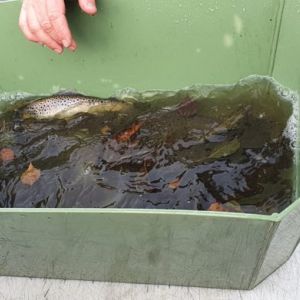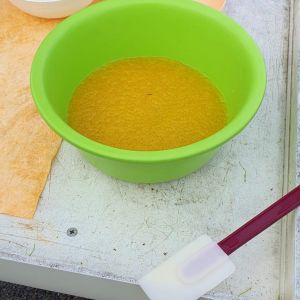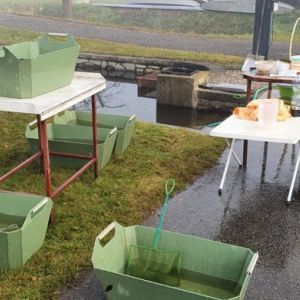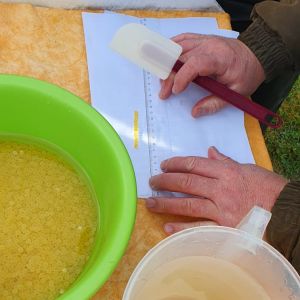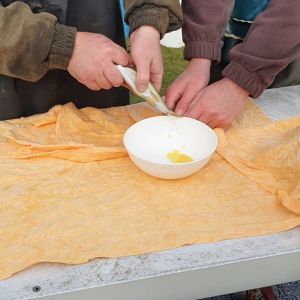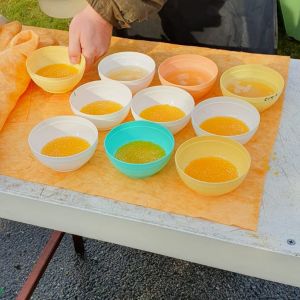Fishing in open waters
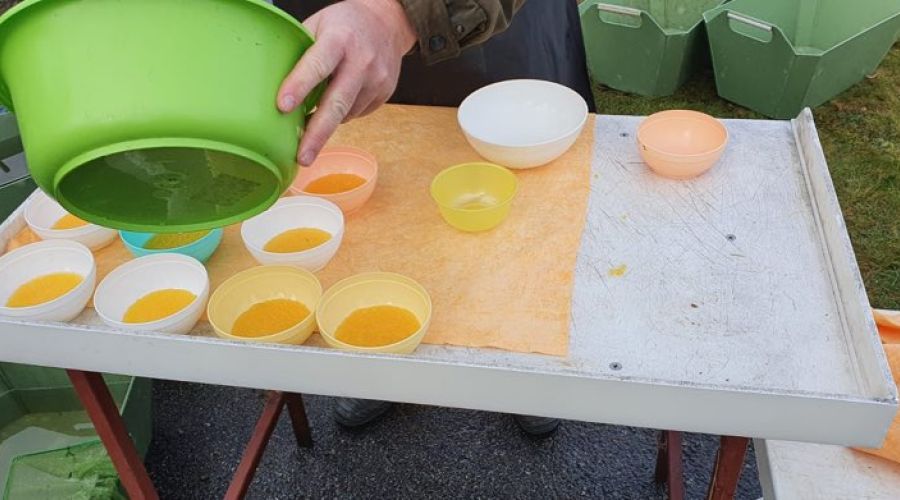
Spawning fish is in full swing so our faculty took part in it, or course. A block of practice exercise was held in Vodňany on 3. 11. 2021 within the subject "Fishing in open waters", which was focused on artificial swabbing of trout (Salmo Trutta m.Fario).
As you may already know in recent times Trout survives far from the best time. The causes are many: carnivorous predators, water pollution, drought, etc. because of this, the genetic material of the original populations of trout, grayling and other species is lost. This is the most important thing from the point of view of breeding fish, because it depends on the catch of genera e.g. sea trout in open waters. One of the solutions to such a complex issue is planting the handle but they have their drawbacks which is e.g. to adapt in a new place. Last exercise, we caught several generational fish from a certain section of the Blanice river to do an artificial swabbing of the fish.
At the beginning of the exercise, Prof. Randák told us about the issues of this topic and the basic things about the exercise. Then we start preparing for spawning fish. We took the trout out of the tank, put them in the VAT, divided the fish according to their sex, and let the females into the bathroom with an anesthetic to unify the swabbing time and accelerate maturation. We had to be careful with the generic fish, so we worked with wet hands and rags. We started from the females and put the ROE in one bowl and especially dry otherwise the quality of the Roe could deteriorate. One of the students took the fish with one hand behind his head, and the other held the tail fin. Before rubbing, it was necessary to wipe the area around the anus and the anal fin. Next were gradually pressed strokes with two fingers on the abdomen to the anus once the eggs were wiped we deposited them in a tank with a solution of potassium permanganate then the fish was discharged back into the river from where it was obtained. We had 10 eggs and we made one big bowl of eggs which we divided into 10 small bowls and that's where we put the trout sperm. The dishes had to be covered with a damp cloth to avoid contact with the sun. We had 10 eggs and we made one big bowl of eggs which we divided into 10 small bowls and that's where we put the trout sperm. The dishes had to be covered with a damp cloth to avoid contact with the sun. We pass to rubbing the milkweed. In one bowl we put the sperm of two fish because the main goal was to ensure the maximum possible genetic variability of the offspring (polyspermatic fertilization). The procedure is no less the same but we pressed on the stomach from the side. When the Ruby has been wiped out we begin activating the Roe. We put water in each dish, it should not be higher than 1-2cm, so as not to dilute the sperm too much and reduce fertilization. We carefully stir with a plastic, rubber or wooden spatula. We leave the bowls with the eggs at rest for 2-3 min, so that the fertilization takes place completely. Then we washed with water several times and poured into one dish, stirring. Then we measured 15 random eggs and based on their diameter using bayrov's table we found the number of eggs per 1L, we came out about 10000pcs. During the lesson, all students went through the main steps of the methodology and gained basic knowledge of the methodology aimed at artificial swabbing of trout (Salmo Trutta m.Fario).
For practical exercises we thank Prof. Tomáš Randák.
Written by: Maksim Kononov

